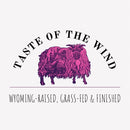
Icelandic Sheep: Breeding Stock
Are you ready to add the ultimate homestead animal to your farm?
Icelandic Sheep are the best of all worlds, and known throughout the world as a triple purpose sheep (raised for meat, wool, and milk), although I often make the claim that they are quadruple-purpose because they also supply beautiful home decor (hides and skulls)
These sheep absolutely thrive in a cold and dry climate like Wyoming.
If you are looking for an animal that can give you delicious and nutritious meat, on a variety of forages- Icelandics do not do well on grain diets, but they excel on dryland pastures, irrigated pastures, and hay.
Icelandic sheep are smaller than most conventional breeds. This makes them easy-to-handle, shear, and feed.
Icelandic sheep can be polled or horned, but I only keep horned stock on my farm. If you are looking for polled sheep, I can recommend other local farms to you!
To learn more about the Icelandic Breed of Sheep please visit the Icelandic Sheep Breeders of America website: https://isbona.com/index.php/about-icelandic-sheep/ct-menu-item-3
"The Icelandic breed is considered a mountain breed, and historically mountain breeds have been milder in flavor, and leaner than the lowland breeds. The meat is indeed very tender with a mild flavor, and is generally described as gourmet meat. With the leaner, European style carcass, and the mild flavor, Icelandic lamb can appeal to the palate of even those consumers who avow they "just don't like lamb." With the combination of the economic and market advantages of grass fed farming, and with the appeal of the delicious flavor, the Icelandic breed is a natural for direct-to-consumer marketing."
I have been raising Icelandic sheep since 2019 and I have found them to be versatile, intelligent, and tough, all while yielding an amazing variety of products that support my family and farm.
I highly recommend this breed to others in similar climates and I would be happy to chat about them with you and help answer any questions you may have.
Feel free to send me an email anytime at BJ@tasteofthewind.com and we can talk sheep!
Or join my email list to receive weekly farm updates and meet the Taste of the Wind flock.
Sorry, there are no products in this collection.
